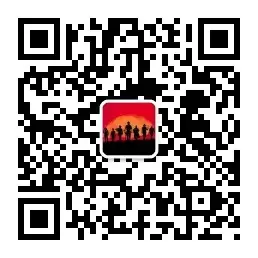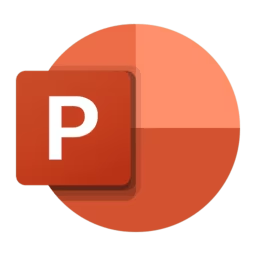用Python、R和Linux进行生物信息学数据分析速成课程
发布于2024年5月 作者:Abdul Rehman Ikram 格式:MP4 | 视频: h264, 1280×720 | 音频: AAC, 44.1 KHz, 2 Ch 流派:电子学习 | 语言:英语 | 时长:95讲(13小时15分钟) | 大小:7.1 GB
通过实践掌握生物信息学数据分析的全面指南,包括实践练习、实际示例和实用技巧
学习内容
- 获得生物信息学数据分析各个方面的实践指南,包括实践练习、实际示例和实用技巧
- 了解生物编程的基本原理及其在生物信息学中的应用。
- 掌握使用Python进行生物信息学的技能,包括序列操作和文件解析。
- 开发使用Python开发生物信息学应用程序的技能,包括用于比对、基因组注释和变体调用的GUI工具。
- 学习用于生物信息学的Bash脚本编写,包括文件操作和管道创建。
- 理解生物信息学管道的概念和重要性,以及如何设计和实现它们。
- 获得使用命令行工具进行NGS数据分析的能力,例如质量控制和基因表达分析。
- 学习使用命令行工具进行变体调用的原理和技术。
- 掌握使用R进行生物信息学的技能,包括数据分析和可视化。
- 使用R学习微阵列数据分析技术,包括标准化和差异表达分析。
- 获得使用Git和GitHub进行版本控制和协作的实践经验。
- 将学到的概念和工具应用于真实的生物信息学数据集。
- 使用编程和脚本语言解决生物信息学挑战的问题解决技能。
- 了解生物信息学数据分析的最佳实践和标准。
- 获得生物信息学研究和应用的最新趋势和进展的见解。
- 在编程和数据分析方面为生物信息学领域打下坚实的基础,为进一步学习或职业生涯做好准备。
要求
- 基本的生物学和遗传学概念知识。
- 熟悉编程概念(Python、R)有帮助但不是必需的。
- 计算机和互联网连接。
- 愿意学习和探索生物信息学工具和技术。
- 对Linux操作系统(命令和文件管理)有基本的了解有益但不是必需的。
描述
欢迎来到使用Python、R和Linux从零开始进行生物信息学数据分析的全面课程!本课程旨在为您提供生物信息学的坚实基础,无论您的背景或经验水平如何。本全面的培训讲座适用于希望扩展对生物数据的理解并在生物信息学领域取得成功的学生、学者和行业专业人士。通过实践演示,将理论与现实应用相结合,探索生物信息学的世界。生物信息学是一个交叉学科领域,结合了生物学、计算机科学和统计学,用于分析和解释生物数据。在本课程中,您将学习生物信息学中使用的关键编程语言和工具,包括Python、R和Linux。课程分为几个模块,每个模块都专注于生物信息学数据分析的特定方面:
- 生物编程介绍(PY、R和Linux):从Python、R和Linux的基础开始,应用于生物信息学。
- 用于生物信息学的Python语言(生物Python):学习用于序列操作和文件解析的Biopython。
- Python用于生物信息学应用程序开发(Tkinter应用程序开发):为生物信息学任务开发GUI应用程序。
- 生物信息学的Bash(用于生物信息学的Linux):掌握用于生物信息学任务和管道的Bash脚本编写。
- 生物信息学管道的理解:学习生物信息学管道的概念和实现。
- 在Bash上进行NGS数据分析(使用命令行进行基因表达):使用命令行工具分析NGS数据。
- Bash上的变体调用:使用Bash脚本进行变体调用。
- 用于生物信息学的R:利用R进行生物信息学数据分析和可视化。
- R上的微阵列分析:使用R学习微阵列数据分析技术。
- 学生的GitHub指南:在生物信息学项目中使用Git和GitHub进行版本控制和协作。 通过本课程,您将获得生物信息学数据分析各个方面的实践指南,包括实践练习、实际示例和实用技巧,以有效实施生物信息学工具和技术。所有使用的源代码都将在GitHub上提供。无论您是生物科学的学生、研究人员还是专业人士,本课程都将为您提供在生物信息学领域取得成功所需的技能和知
Bioinformatics Data Analysis Crash Course Python R and Linux

Published 5/2024
Created by Abdul Rehman Ikram
MP4 | Video: h264, 1280×720 | Audio: AAC, 44.1 KHz, 2 Ch
Genre: eLearning | Language: English | Duration: 95 Lectures ( 13h 15m ) | Size: 7.1 GB
Comprehensive Guide to Bioinformatics Data Analysis using Python, R, and Linux through hands-on Practices and gain skill
What you’ll learn:
Gain a practical guide on every aspect of bioinformatics data analysis, including hands-on exercises, real-world examples, and practical tips
Understand the fundamentals of biological programming and its application in bioinformatics.
Gain proficiency in using Python for bioinformatics, including sequence manipulation and file parsing.
Develop skills in developing bioinformatics applications using Python, including GUI tools for alignment, genome annotation, and variant calling.
Learn Bash scripting for bioinformatics, including file manipulation and pipeline creation.
Understand the concept and importance of bioinformatics pipelines and how to design and implement them.
Acquire the ability to analyze NGS data using command-line tools for tasks such as quality control and gene expression analysis.
Learn the principles and techniques of variant calling using command-line tools.
Develop proficiency in using R for bioinformatics, including data analysis and visualization.
Learn microarray data analysis techniques using R, including normalization and differential expression analysis.
Gain practical experience in using Git and GitHub for version control and collaboration in bioinformatics projects.
Apply learned concepts and tools to real-world bioinformatics datasets.
Develop problem-solving skills for bioinformatics challenges using programming and scripting languages.
Understand the best practices and standards in bioinformatics data analysis.
Gain insights into the latest trends and advancements in bioinformatics research and applications.
Prepare for further studies or a career in bioinformatics with a solid foundation in programming and data analysis for the field.
Requirements:
Basic knowledge of biology and genetics concepts.
Familiarity with programming concepts (Python, R) is helpful but not required.
Access to a computer with internet connection.
Willingness to learn and explore bioinformatics tools and techniques.
Basic understanding of the Linux operating system (commands and file management) is beneficial but not mandatory.
Description:
Welcome to the comprehensive course on Bioinformatics Data Analysis from Scratch using Python, R, and Linux! This course is designed to provide you with a solid foundation in bioinformatics, regardless of your background or experience level.This comprehensive training bootcamp is designed for students, academia, and industry professionals looking to extend their understanding of biological data and excel in the field of bioinformatics. Explore the bioinformatics world through hands-on, practical demonstrations that bridge theory with real-world applications.Bioinformatics is an interdisciplinary field that combines biology, computer science, and statistics to analyze and interpret biological data. In this course, you will learn the essential programming languages and tools used in bioinformatics, including Python, R, and Linux.The course is divided into several modules, each focusing on a specific aspect of bioinformatics data analysis:Introduction To Biological Programming (PY, R and Linux): Get started with the basics of Python, R, and Linux as applied to bioinformatics.Python Language for Bioinformatics (Biopython for Bioinformatics): Learn Biopython for sequence manipulation and file parsing.Python For Bioinformatics Application Development (Tkinter App Development): Develop GUI applications for bioinformatics tasks.Bash for Bioinformatics (Linux use in Bioinformatics): Master Bash scripting for bioinformatics tasks and pipelines.Understanding Bioinformatics Pipeline: Learn the concepts and implementation of bioinformatics pipelines.NGS data Analysis on Bash (Gene Expression Using Command Line): Analyze NGS data using command-line tools.Variant Calling on Bash: Perform variant calling using Bash scripting.R for Bioinformatics: Utilize R for bioinformatics data analysis and visualization.Microarray Analysis on R: Learn microarray data analysis techniques using R.GitHub Guide for Students: Use Git and GitHub for version control and collaboration in bioinformatics projects.By the end of this course, you will have gained a practical guide on every aspect of bioinformatics data analysis, including hands-on exercises, real-world examples, and practical tips for effective implementation of bioinformatics tools and techniques. All the codes used will be available to GitHub Whether you are a student, researcher, or professional in the biological sciences, this course will equip you with the skills and knowledge needed to excel in the field of bioinformatics.
扫码免费下载














